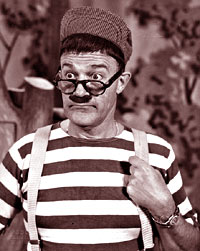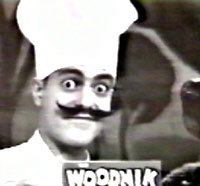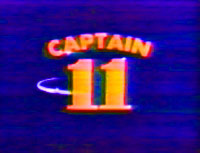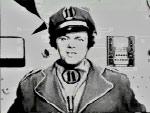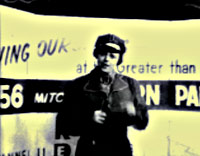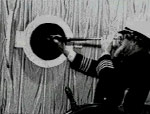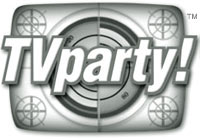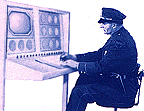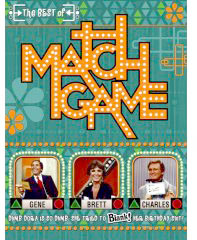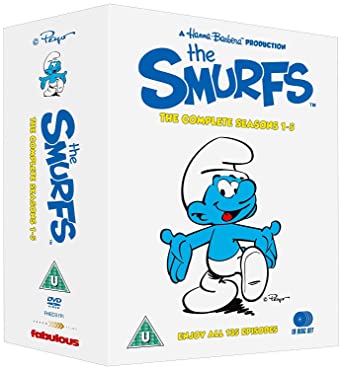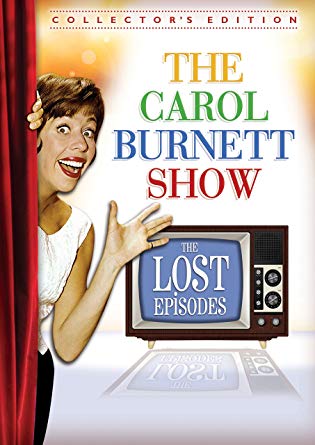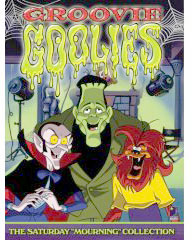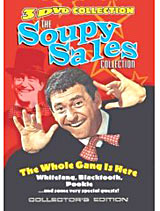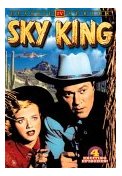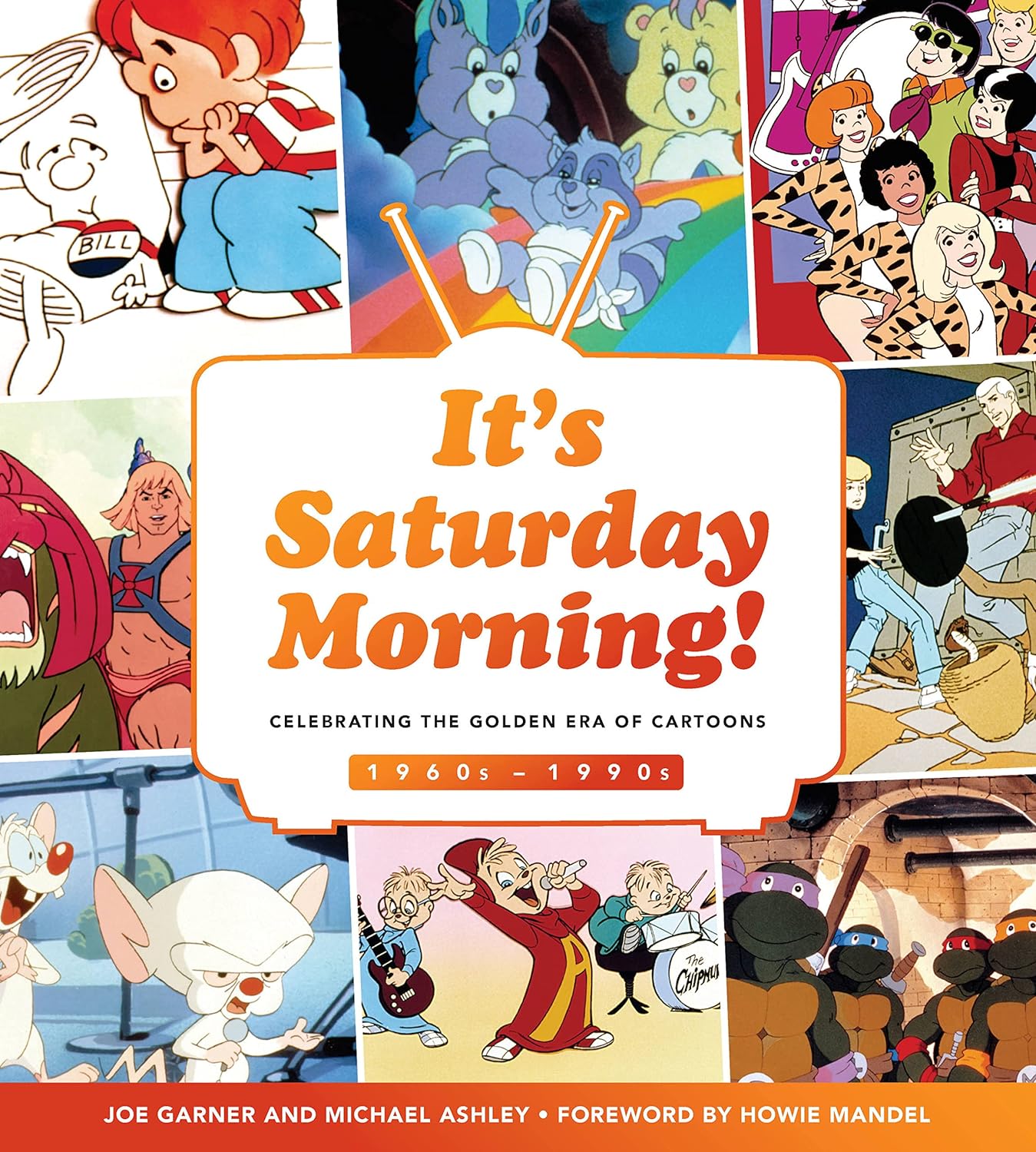|
"Skipper Daryl," allegedly the first kids' show in the Twin Cities to feature a costumed character, was created for Channel 11 by Daryl Laub in 1953. Later that year he added a tattered clown called J. P. Patches to the roster as well. In the spring of 1954, one of the Twin Cities' best-remembered children's characters appeared on WTCN-TV for the first time: engineer Casey Jones, played by Roger Awsumb.
Joe was part of the show until 1959 when Wedes moved to Seattle to host his own children's show there -- ironically, in the role of J.P. Patches, which he had taken over from Daryl Laub when Laub moved to KSTP-TV. During the mid-1950s, WTCN-TV also featured "Wrangler Steve" a cowboy played by Steve Cannon (later a WCCO radio favorite), and "Captain 11" a uniformed space ranger originally played by Jim Lang (later host of the ABC-TV game show "The Dating Game") and also by the ubiquitous Chris Wedes. Ultimately, the Captain 11 character was exported to Sioux Falls, South Dakota, where he was portrayed by Dave Dedrick and lasted far longer than the Twin Cities prototype. The onscreen fun and games of the local kids' shows masked hardnosed ratings gamesmanship that was every bit as intense as the battle for adult audiences. Gene Godt, the promotion director of WCCO-TV, candidly admitted that the late afternoon time period - the slot for most local children's programs during the Fifties - was "...the most intensely competitive 90 minutes of television produced locally in our five-station market." He also noted that children were "...one of the most important audiences, for the kids not only directly influence their parents' choice of products, but to a large extent determine which is the favorite channel on their family television set." KSTP-TV's pioneer program "Jimmy's Junior Jamboree" was an early casualty of the fierce competition for kiddie viewers. It had garnered good ratings at first, despite the abysmal quality of its cartoon library, but then Warner Brothers offered hundreds of their classic cartoons to television. WTCN-TV acquired the package for their new "J.P. Patches" show, and -- armed with superior film product -- the clown's ratings rose while JJJ's numbers steadily declined. The trend proved to be irreversible, and not even a children's show could be sustained by sentiment. "Jimmy's Junior Jamboree" was cancelled around October, 1954. Jimmy Valentine then saddled up for the Western program "Boots and Saddles," an hour-long program: for the first 15 minutes they showed part of an old Western movie, then Jimmy (attired in a cowboy outfit) did half an hour with the kids in the studio, and the show concluded with 15 more minutes of the movie. The movie would be continued the next day. Meanwhile, WCCO-TV ("Canal 4" as Axel would later call it) badly needed a strong entry in the kidvid sweepstakes. It's not surprising that the station turned to a proven performer like radio veteran Clellan Card. Although Clellan's kid appeal had been noted as early as the 1930s, he had always considered himself an entertainer of adults. Not that there was anything off-color in his routines; it's simply that most of his humor was aimed at grown-ups.
To play Axel's dog Towser, Clellan enlisted the aid of a young actor and director named Don Stolz, who was building a reputation at the Old Log Theater in the suburb of Excelsior. The pairing proved to be a winning combination. The chemistry between Clell and Don would be a key factor in the success of the new show. Clellan, Don, and director Harry Jones worked out the basic premise of the Axel program, probably during the summer of 1954. They realized that visuals were crucial in the new medium of TV. Axel's costume, like the outfits worn by the classic movie comedians, was simple yet memorable. A train engineer's cap perched high on his head, the brim sticking straight up. A bushy mustache erupted from beneath Axel's nose, making him vaguely resemble an idiotic Adolph Hitler (but apparently there were no complaints from viewers). He wore a T-shirt with wide black and white horizontal stripes, intersected by a pair of broad suspenders that held up his baggy olive-green khakis. To make absolutely sure that his pants stayed up, Axel added a long rope belt that dangled almost to his knees.
Once, he claimed that he could see "... even out to Esther Williams' house out to California out dere." The distances seemed to grow greater and greater as time went on, until eventually Axel declared that, using his spyglass, he could look "clean around the world" - and see himself! The telescope worked beautifully as a transitional device. Every time Axel squinted into it, he directed the audience's attention to the next cartoon, short subject, or commercial. Though its appearance would change over the years, Axel's spyglass became an indelible part of his goofy gestalt from the moment he first peered through it.
Viewers only saw Towser's huge mottled brown paw - actually a sort of gigantic mitten that fit over Don's entire arm. Yet despite being almost completely unseen and unable to talk to boot, the mutt was vividly brought to life by Don Stolz. A canine of indeterminate breed, Towser was Axel's most trusted friend, and like any dog, he was loyal and eager to please. Although he couldn't speak English, he definitely could communicate, using an amazing variety of barks, arfs, growls, howls, yips, yaps, and yelps. At times, it almost seemed as if Towser could talk.
Director Jones conceived the setting for Axel's shenanigans: a ramshackle tree house atop a large tree in a forest. "My main philosophy, if you want to be artsy enough to call it that," he noted modestly, "was that if you're going to do a kids' show, the setting is very important." In retrospect, Harry's choice seems utterly perfect, a felicitous blend of reality and fantasy. To kids, a tree house offered a genuine refuge from the grown-up world, a place where adults seldom ventured.
Unlike many kids' TV shows, Axel and His Dog did not include a "peanut gallery" full of breathless, restless youngsters. It was felt that seeing the show in the studio would shatter the illusion for kids. Watching Axel cavort on the mysterious, glowing cathode screen at home might seem magical; seeing the same thing in person, divorced from the alchemy of the airwaves, might expose him as a man in a goofy costume in front of a cheap painted backdrop. Worse, it would be impossible to prevent a studio audience from seeing Towser's true identity. That couldn't be allowed to happen -- despite the silliness, Axel and His Dog always maintained a tantalizing air of mystery. At 5:00 p.m. on Thursday, August 5, 1954, "Axel and His Dog" aired for the first time. According to Don Stolz, it nearly turned out to be the last time as well.
This had netted a stack of postcards chock-full of gags, knock-knocks, and riddles. In spite of the hectic atmosphere, the first show proceeded pretty smoothly - until Axel decided that it was time to read some of those jokes that the kids had sent in. Plucking a letter from the pile, he read aloud: "Why does the chicken cross the road?" Perhaps chuckling at the notion that the first joke on his new program would be the world's oldest chestnut, Axel read the punch line before he realized what he was saying: "Because she's laying the farmer on the other side!" Miraculously, the show wasn't immediately cancelled. Although Axel was apt to say anything at any time, the Saturday morning version of "Axel and His Dog" was especially wild. "This was all live, you have to remember that," Don noted. "Clellan was a night person, and I certainly was, operating a theater, and half of the floormen were night people, and I'll tell you, anything could happen on that show at that hour of the morning."
Another Saturday morning, near the end of the program, Axel said to the kiddies, "Well, we've been up here in the Tree House for about an hour now, and you've been up for a while, but I'll bet that your parents are still in bed. I think it's about time that they got up, too. So, get a glass of water, go into their bedroom and throw it in their faces, and say, 'Good morning! Time to get up now!'" After the show, Don turned to Clellan and said, "I don't think you should have done that." Affecting an air of unconcern, Clell brushed him off, saying, "Oh, don't worry about it." The two of them had just walked into Clellan's office when the telephone rang. For some reason, Clell was reluctant to answer his phone, so Don picked it up and intoned, "Clellan Card's office." The woman on the other end of the line snarled, "Put that son of a bitch on!" Don gingerly handed the receiver to Clellan, who answered with great aplomb, "Helllloooo?" That, however, was the only thing he had a chance to say, as the woman launched into a furious tirade -- because, of course, her child had done exactly as Axel had instructed.
|
Axel
& His Dog & more
Excerpts from the forthcoming book "What a Card! The Story of Clellan Card and 'Axel and His Dog'" by Julian West. Axel's Treehouse website: http://axelstreehouse.tvheaven.com
Mr. Gallos hosted a Laurel & Hardy TV show in the Twin Cities, Mn. viewing area and it was a most popular series, the show had a large following with adults and kids. Gallos provided information about the comedy team for his viewers. In the summer of 1988 he attended The Sons Of The Desert's convention in the Twin Cities where he MC'd a special stage show at the World Theater. (The World Theater was the stage that was used for Mr. Garrison Keilor's popular radio comedy series The Prairie Home Companion.) Gallos
introduced screenings of a Harold Lloyd comedy titled "Speedy"
(the film also starred Baseball great Babe Ruth and the first Little
Rascal Mr. Ernest Morrison aka "Sunshine Sammy"), "The
Our Gang Follies Of 1938"with Spanky McFarland, Darla Hood, Buckwheat
Thomas,Eugene ("Porky") Lee, Alfala Switzer and Henry (Kleinbach)
Brandon, "Spanky" (the film comedy) and some scenes from L&H's
Babes In Toyland March Of The Wooden Soldiers. Gallos also brought onto
the stage Dorothy De Borba, Ernie Morrison, Spanky,Virigina Karnes Patterson
(Mrs. Patterson played "Mother Goose" in Babes in Toyland,
Rosina Lawrence and Hank Brandon. - Kevin S. Butler "In the mid - to late 1960's I remember an early (5am-6:30am) cartoon show called Siegfried's Saucer, Siegfried's Spaceship or the like. It was a half-hour compilation of oddish cartoons. One in particular was about the prehistoric horse "eohippus". The only image I can remember is of the eohippus prancing through a primordial forest singing "I am an eohippus, I am an eohippus...". Any ideas? This was in Minneapolis, Minnesota on WCCO-TV (I think). I seem to remember another short cartoon with a pink(?), pear-shaped(?) character that sang some gibberish like "...bip-bip-bip-bye-bo... " Thanks for any information you can provide. - Sincerely, Avrom Schwartz
AUDIO & VIDEO:
Captain 11 signs off, from the fifties.
Captain 11 from a Christmas Day broadcast in the 1960s. A Casey Jones retrospective and update in a news report from the year 2000.
HOLIDAY BONUS: Axel does 'The Night Before Christmas (audio) This clip courtesy of Robert Wild - he's the one who actually recorded the TV transmission December 25, 1958, and it wouldn't exist otherwise.
A DULUTH FAVORITE: 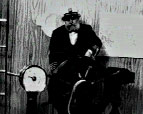
Opening
to the
NEW - DON'T MISS THIS: If
you'd like to have Axel's version of "The Night Before Christmas"
but don't want to pay big bucks for the original collector's AXEL
ARTYFACTS TWIN CITIES KID STUFF If you're interested in either CD, please email me for
details on how to
Axel
& His Dog & more |
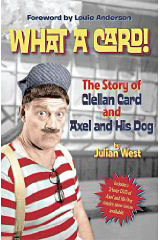
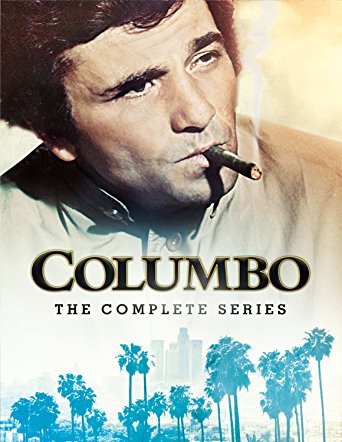
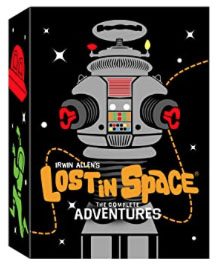
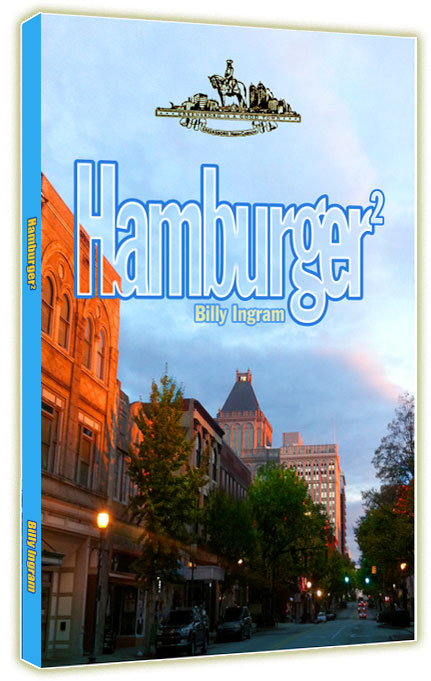

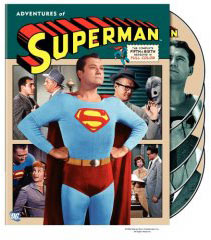
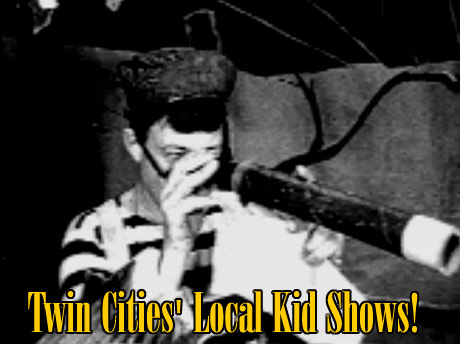
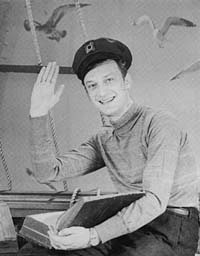 In
a complicated corportate shuffle, Channel 4 (originally WTCN-TV) was
transformed into WCCO-TV in August 1952. The next year a reborn WTCN-TV
re-entered the television fray as Channel 11. The new WTCN-TV wasted
little time in joining the race for kiddie viewers.
In
a complicated corportate shuffle, Channel 4 (originally WTCN-TV) was
transformed into WCCO-TV in August 1952. The next year a reborn WTCN-TV
re-entered the television fray as Channel 11. The new WTCN-TV wasted
little time in joining the race for kiddie viewers. 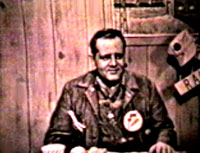 Thousands
of kids went home from school for "
Thousands
of kids went home from school for "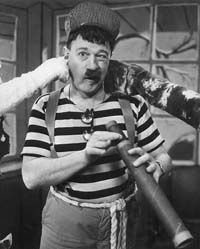
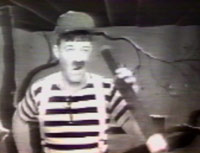 Right
from the very first program, Axel also brandished his magic spyglass.
Allegedly a telescope, even a small child could see that it was nothing
more than two cardboard tubes, one nested inside the other. Yet somehow,
Axel's spyglass worked - probably because he so convincingly claimed
that it did. He affectionately called it his flute and carefully put
it away after each use, so that "nobody could steal it." He
often talked about it as if it were the latest in modern technology,
and spoke of turning up the "candlepower" to increase its
range.
Right
from the very first program, Axel also brandished his magic spyglass.
Allegedly a telescope, even a small child could see that it was nothing
more than two cardboard tubes, one nested inside the other. Yet somehow,
Axel's spyglass worked - probably because he so convincingly claimed
that it did. He affectionately called it his flute and carefully put
it away after each use, so that "nobody could steal it." He
often talked about it as if it were the latest in modern technology,
and spoke of turning up the "candlepower" to increase its
range. 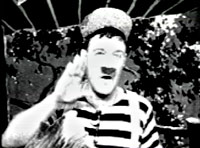 Director
Harry Jones decreed that Axel's dog Towser should remain unseen by the
viewing audience, except for his paw. "I figured that if you really
saw [Towser], all you'd see was some kind of a dumb dog outfit that
would never convince anybody. I always felt very strongly that kids
liked [to use their] imagination. I mean, what did Towser really look
like? Well, we never ever showed Towser on the air."
Director
Harry Jones decreed that Axel's dog Towser should remain unseen by the
viewing audience, except for his paw. "I figured that if you really
saw [Towser], all you'd see was some kind of a dumb dog outfit that
would never convince anybody. I always felt very strongly that kids
liked [to use their] imagination. I mean, what did Towser really look
like? Well, we never ever showed Towser on the air."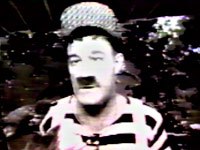 Somehow,
Axel could always understand what his faithful pooch said. On one show
when he asked Towser, "What aminal is the best timekeeper?",
the dog uttered a staccato series of barks in reply. Axel shook his
head, saying, "No, I think you have the wrong idea there. Try again,
please." Towser barked again and Axel laughingly exclaimed, "Yah,
he's right, a watch dog! Oh well, speaking of time, I s'pose that's
the windup!"
Somehow,
Axel could always understand what his faithful pooch said. On one show
when he asked Towser, "What aminal is the best timekeeper?",
the dog uttered a staccato series of barks in reply. Axel shook his
head, saying, "No, I think you have the wrong idea there. Try again,
please." Towser barked again and Axel laughingly exclaimed, "Yah,
he's right, a watch dog! Oh well, speaking of time, I s'pose that's
the windup!"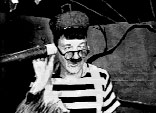 Axel's
Treehouse was an idealized version of that childhood daydream, with
the intimate atmosphere of a clubhouse. Anyone with a television set
could join the gang. "It is entirely imaginative," Clellan
declared in 1957. "We've put Axel, a crusty old guy who likes kids,
in a treehouse. It's a good setting for kids' imagination and lends
itself to the stories I tell or the films being run."
Axel's
Treehouse was an idealized version of that childhood daydream, with
the intimate atmosphere of a clubhouse. Anyone with a television set
could join the gang. "It is entirely imaginative," Clellan
declared in 1957. "We've put Axel, a crusty old guy who likes kids,
in a treehouse. It's a good setting for kids' imagination and lends
itself to the stories I tell or the films being run."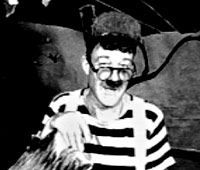 Like
virtually all television programs of the era, it was broadcast live.
Cast and crew had a quick run-through to determine the basic positions
for the two floor cameras, but there really wasn't a proper rehearsal.
There was no script - the show was always basically ad-libbed. WCCO-TV
had been running promotional announcements for the program during the
summer, inviting kids to send in jokes for Axel to read on the air.
Like
virtually all television programs of the era, it was broadcast live.
Cast and crew had a quick run-through to determine the basic positions
for the two floor cameras, but there really wasn't a proper rehearsal.
There was no script - the show was always basically ad-libbed. WCCO-TV
had been running promotional announcements for the program during the
summer, inviting kids to send in jokes for Axel to read on the air.
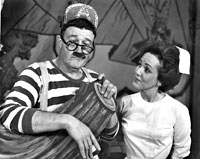 Mary
Davies, who played
Mary
Davies, who played 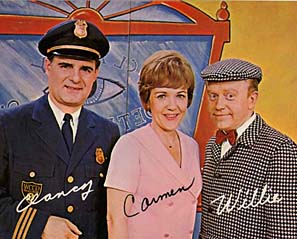 PART
THREE:
PART
THREE:
